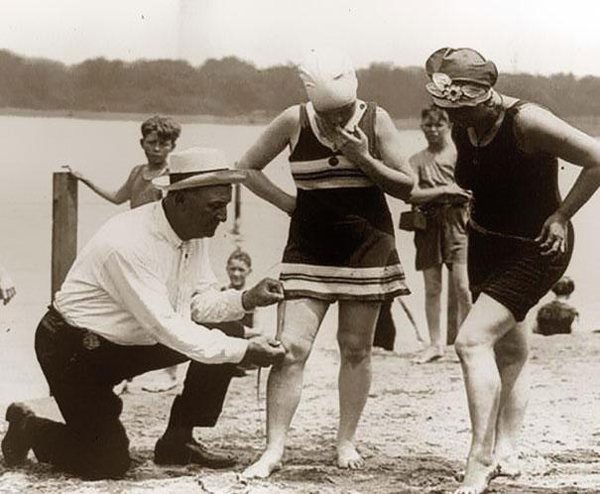The only reason why this is even controversial, is that now one can't claim that gender imbalances in whatever field are necessarily caused by offensive attitudes.
Which we actually can't claim even if environmental impact was bigger than biological one.
There's the rub! Let's assume for a second that societal imbalances are, to various degrees, the result of biological behavior patterns. It would essentially mean that 'the patriarchy' or whatever -ism and -phobia the radical ideologues are claiming to be ailing modern societies, really isn't that much of a problem after all. It would mean that the current basic principles of western societies are indeed working as intended. If the postmodern
social constructionists would be forced to admit to that, their very raison d'être would be challenged. Their whole premise basically hinges on the assumption, that the vast majority of people are full of nefarious biases, them being the exception of course.
They are not interested in academic rigor, they are interested in establishing hegemony over other scientific disciplines. Hence why they consider
science and facts themselves as being sexist.
The thing with social constructionism (not to confuse with constructivism) is that it's in essence a hen and egg problem. Sure, culture influences people, but they ignore to what extent people influence culture. For example, they assume that evil corporations are perpetuating gender stereotypes for their own economical gains and in order to 'keep women down'. By perpetuating that narrative, they create another bogeyman so that people rally behind them, essentially fortifying their academic existence.
What if corporations aren't inherently evil, but merely profit-driven by satisfying demand while conforming to people's desires? There simply would be no 'enemy' to fight against, essentially invalidating their whole premise. I have yet to see one single scientific evidence that corporations are indeed 'evil' in that specific way. If you think about it, it doesn't make a whole lot of sense either, because it would effectively be much more profitable if you could simply market the same products to both, men and women alike.
Lets take another example:
sex sells. Humans are sexual creatures, but it works differently for
men and women. It would be ridiculous to assume that corporations seek to 'objectify women'. As profit-driven entities they merely seek the best marketing strategy. Funnily enough, women tend to be much more attracted by expensive luxury items, than men and they find sexual ads more appealing when they convey a sense of commitment:
Women who saw the ad combining the $10 watch and sexual imagery reported anger, disgust and upset on seeing the spot but their reactions were less severe on seeing the expensive item. Men's reactions did not change regardless of the price. [...] The experiments found women's spontaneous dislike of sexual ads softened when the ad could be interpreted in terms of commitment-related resources being offered by men to women, while men's positive attitudes towards sexual ads were "relatively unaffected" by the inclusion of relationship commitment cues.
In fact, if you would be a smart business, you would focus men and women
differently, because that's how you best market your product. In essence, biological behavior patterns in customers oftentimes dictate the marketing strategies of businesses that seek to maximize their appeal.
A sexual appeal is a strong psychological appeal, second only to self-preservation. In humans, as in all animals, sexual desire is an instinctive reaction as we search for the perfect mate (Taflinger, 1996). Sexual imagery used in advertising for products like perfume, makeup, and clothing, then, can be explained or rationalized in part by this mating desire in humans: We want to look good to attract a mate and to propagate our species. However, sexual imagery has been shown to have a stronger persuasive ability for men than for women. It may be because men have a different set of criteria for selecting a mate than women do:
Men traditionally tend to recognize that a woman who is young, healthy, and beautiful will be a good mate. Therefore, many advertisers use sexual imagery to get a man's attention and then associate buying the product with getting a mate (Taflinger, 1996). These types of messages focus on instinctual or physical types of meaning in messages. For women, the persuasive power of sexual imagery works on a somewhat different level. A healthy, fit male model will attract the attention of many women and may even create desire for the product.
Women, though, also pay attention to the long-term potential of a man - for example, his ability to be a good father and to provide them with money, power, and prestige. All these factors are almost impossible to put into any single advertisement (Taflinger, 1996). Arguably, then, it is difficult for advertisers to use sex successfully to sell to women. Instead, advertising uses romance to make a sexual connection with women. Romantic images are less blatant and more ambiguous than traditional sexual messages: They provide images of courtship, relationships, and the process of falling in love. Sexual imagery in advertisements directed toward women becomes much more intellectual than physical (Taflinger, 1996).
Because these marketing strategies appeal to our hard-wired biological conditioning, they work so well, that they pose the risk of become too reductive. By focusing too much on these marketing strategies, they can lead to the creation of overly simplistic stereotypes. This is where cultivation theory comes in. But, it must be said that these marketing stereotypes are not the result of 'evil' businesses, but merely of people's ingrained behavioral tendency to like them so much (men and women alike). To construe some sort of ideological crusade out of that, is quite frankly absurd. In this regard, there is nothing wrong with products appealing to men, just as much as there is nothing wrong with products appealing to women. It's human nature.

